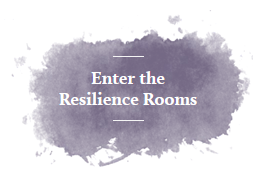And What To Do Instead
I work with patients who are in considerable pain. Deep and intense pain surfaces because of expected and unexpected challenging life circumstances. I connect with my empathy and deep compassion while I attune and support them through their process and healing.
I’m also aware of wanting to rid myself of the pain that surfaces because imagining what it must be like to be in their shoes, relating to their story in some personal way, or being fearful that I can find myself in that situation, which all feels like it’s too much to bear. Although the inclination to cut off my emotions instinctively kicks in, I’m there in the moment, fully and openly.
We all avoid anxiety to some extent to detach from the discomfort it evokes in our thoughts and feelings. We would rather cut off our fears, worries, and ruminating mind, to preclude us from any residual side effects that may surface in our body and mind.
As much as we desperately try to, the thoughts and feelings still appear. Our pain is inevitable because our humanism dictates it. Throughout our development, we’ll unavoidably find ourselves in circumstances that are painful, challenging, and are out of our control. Our choice is whether we will proactively accept, cope, and work through it.
When we resist the pain and stockpile pain plus resistance to pain it exacerbates the intensity and frequency of the negative emotions and causes suffering. Our suffering is not inclusive of our humanism.
By expressing and acting out on behalf of the statements, “I don’t like this thought and/or feeling”, “I don’t want this thought and/or feeling”, “I shouldn’t have this thought and/or feeling”, “There is something wrong with me for having this thought and/or feeling”, and “Having this thought and/or feeling means I am ___”, we may find ourselves being overwhelmed and exasperated.
According to Kristin Neff and Christopher Germer, and their work on self-compassion, they recommend on an emotional and physical sense, that you let yourself be. In 2018, there were over 1840 evidence-based journal articles on the benefits of having or acquiring self-compassion.
It is known to increase well-being and life satisfaction, happiness, gratitude, self-confidence, optimism, wisdom, curiosity, conscientiousness, creativity, autonomy, overall health, etc. It is also known to be associated with a reduction in anxiety, depression, stress, maladaptive perfectionism, self-criticism, rumination, shame, and suicidality.
We all share the need to be attuned to, connected to, validated, and comforted. We have taken on the idea that it “should” or “must” come from others and needs to be facilitated by certain people in a specific way. We become attached to fixated ideas about how we are to receive support and encouragement from others. Because we are so focused externally, we often lose sight in our ability to self-soothe and internally strengthen and empower ourselves.
There are early influences that impact our self-compassion such as attachment security, parental criticism, conflict in the home, and history of neglect or abuse. When we give ourselves self-compassion, we may discover the conditions under which we were not loved or given the compassion we wanted or needed. We must be willing to go through that process in order to challenge our perceptions and allow ourselves this authentic gift.
The question to perpetually ask yourself is: What do I need?
Reflect on if a friend were challenged in a similar way in which you currently find yourself, how would you think and feel about their circumstance? What would you say to them (i.e., tone of voice, selection of words, body language, etc.)?
Validate yourself by acknowledging how much it truly hurts and why that might be the case. Then remind yourself of your common humanity, that life is full of pain and struggling which is innately part of life. Struggling is also part of living, growing, changing, and becoming. Offer kindness to yourself by giving yourself soothing touch. This touch reminds you that you have value and matter.
Some soothing touch postures include: (1) one hand holding the other, (2) one hand rubbing the other, (3) one hand over the heart, (4) one hand over the heart and the other hand holding the heart, (5) one hand with a fist over the heart, (6) one hand on belly and another on the heart, (7) two hands on your belly, (8) one hand on your cheek, (9) both hands cradling your face, (10) gently stroking your arms, (11) giving yourself a hug, and (12) cupping your hands in your lap.
Say the words you most need to hear. You can repeat to yourself, “I hear you”, “I feel you”, “I care about you” or any other validating terms that resonates with you. You can also offer words of encouragement to yourself, by verbalizing, “You can do it”, “You’re capable”, “You’re worthy” or any other words that you find supportive.
When we pay attention to our fundamental needs and offer ourselves a meaningful response, we learn to want and except kindness which isn’t always easy to take on and internalize. It can initially feel awkward or uncomfortable, threatening, or unnecessary. However, the more you engage in and practice it, you grow into accepting connective ways to be paid attention to and cared for.
Because your needs constantly change, you’re the only one who can possibly know what you will need in any given moment. Take the time to be with yourself, no matter what shows up. Be compassionate to all parts of yourself, because all of you is valuable and truly matters.



